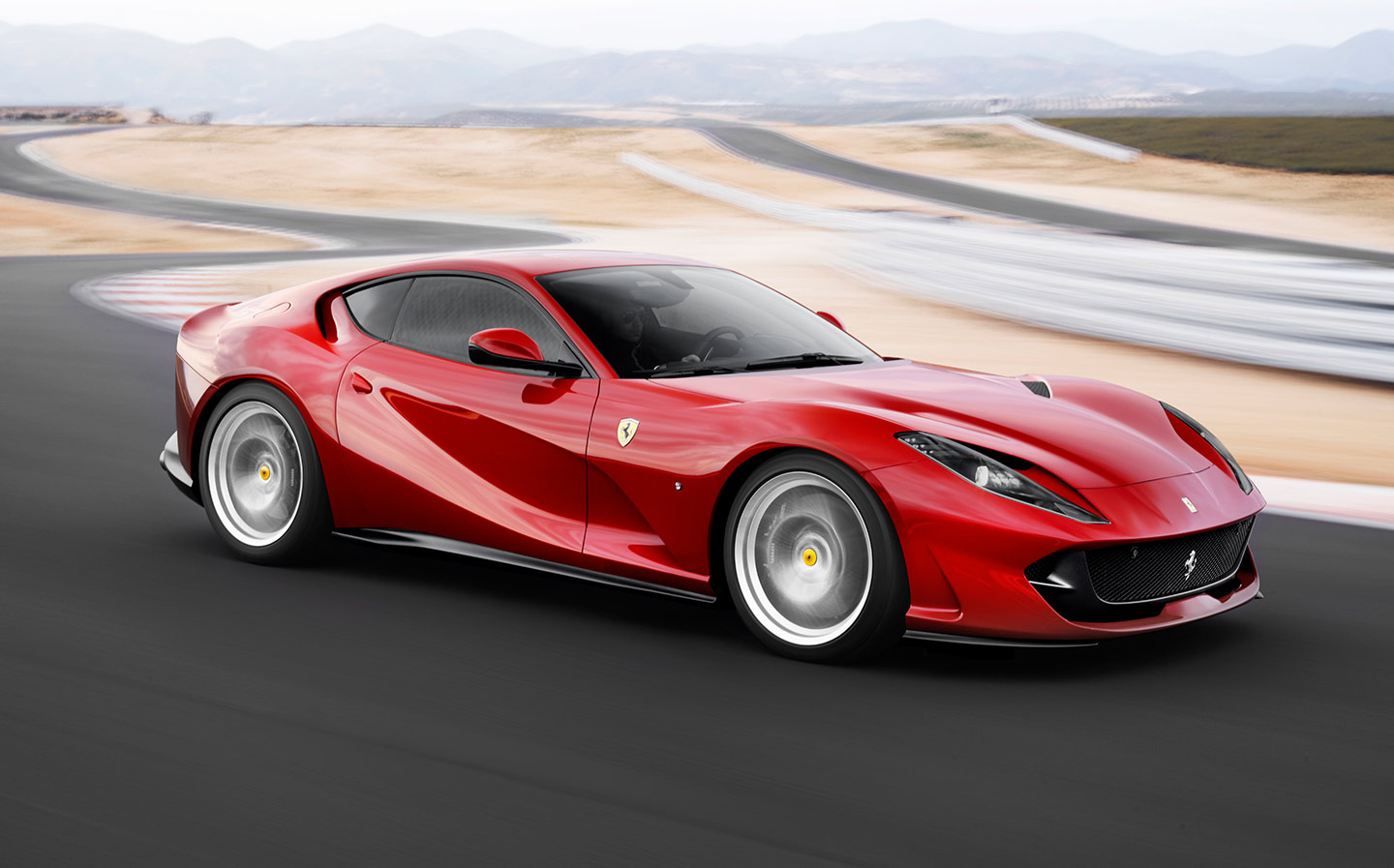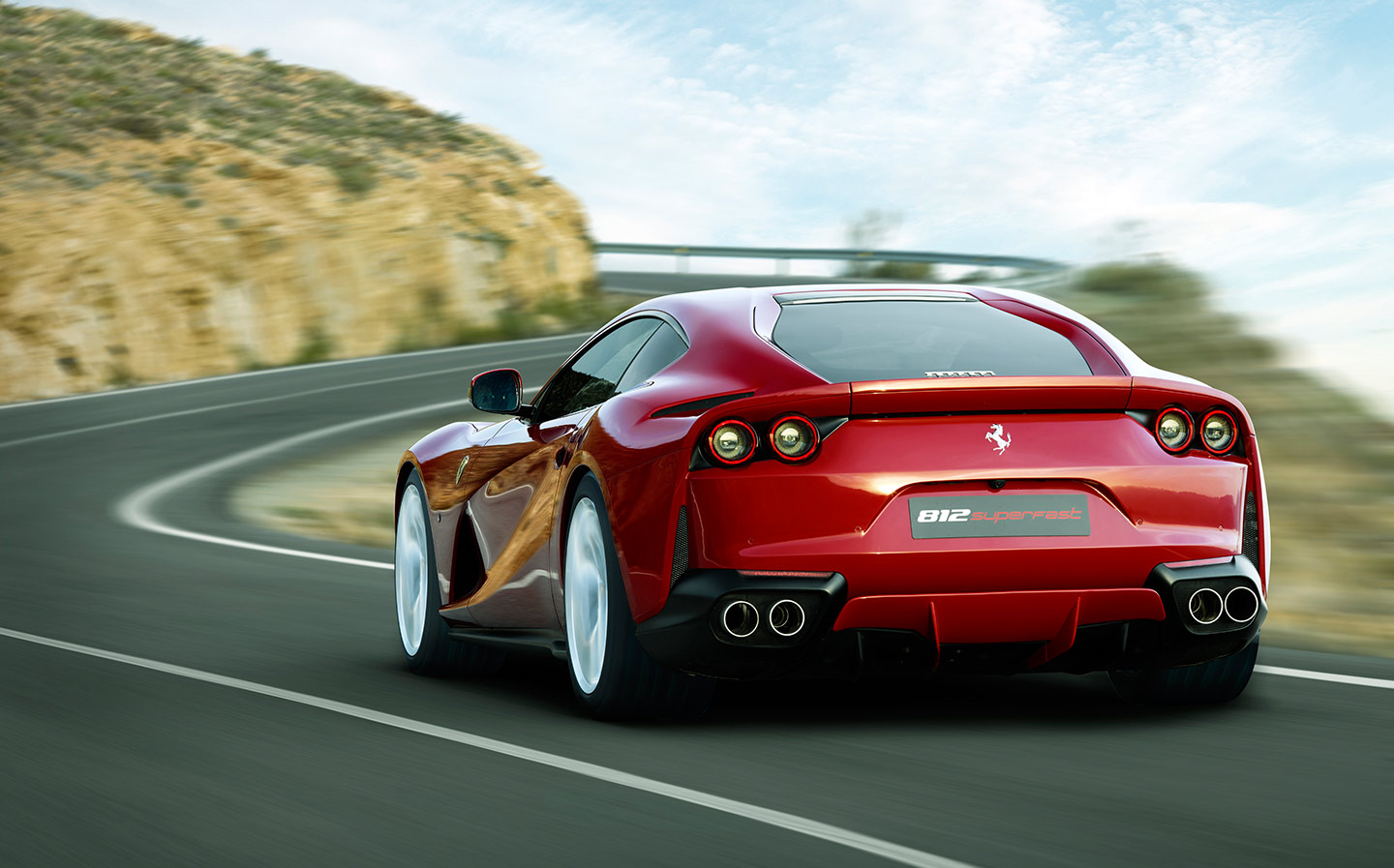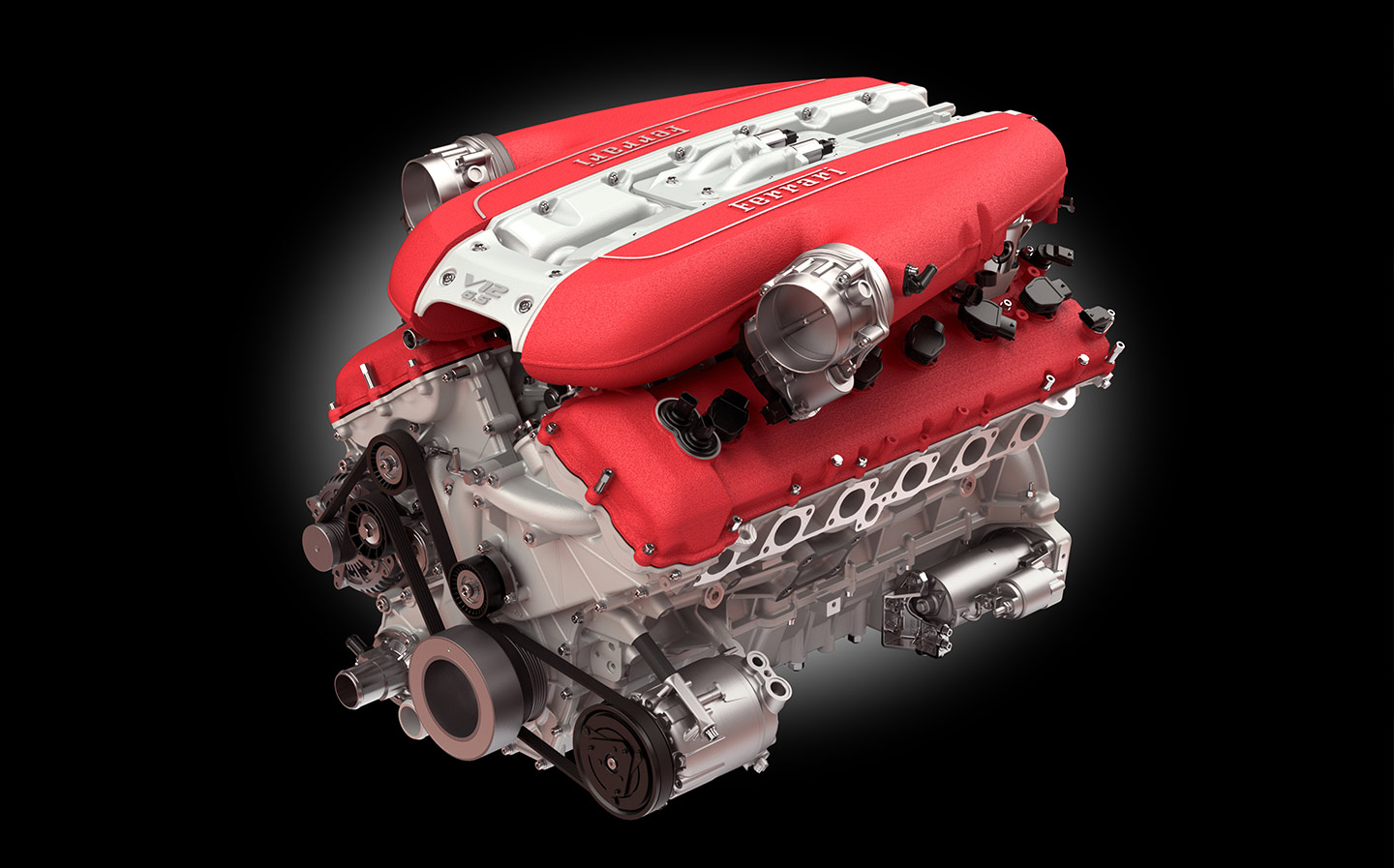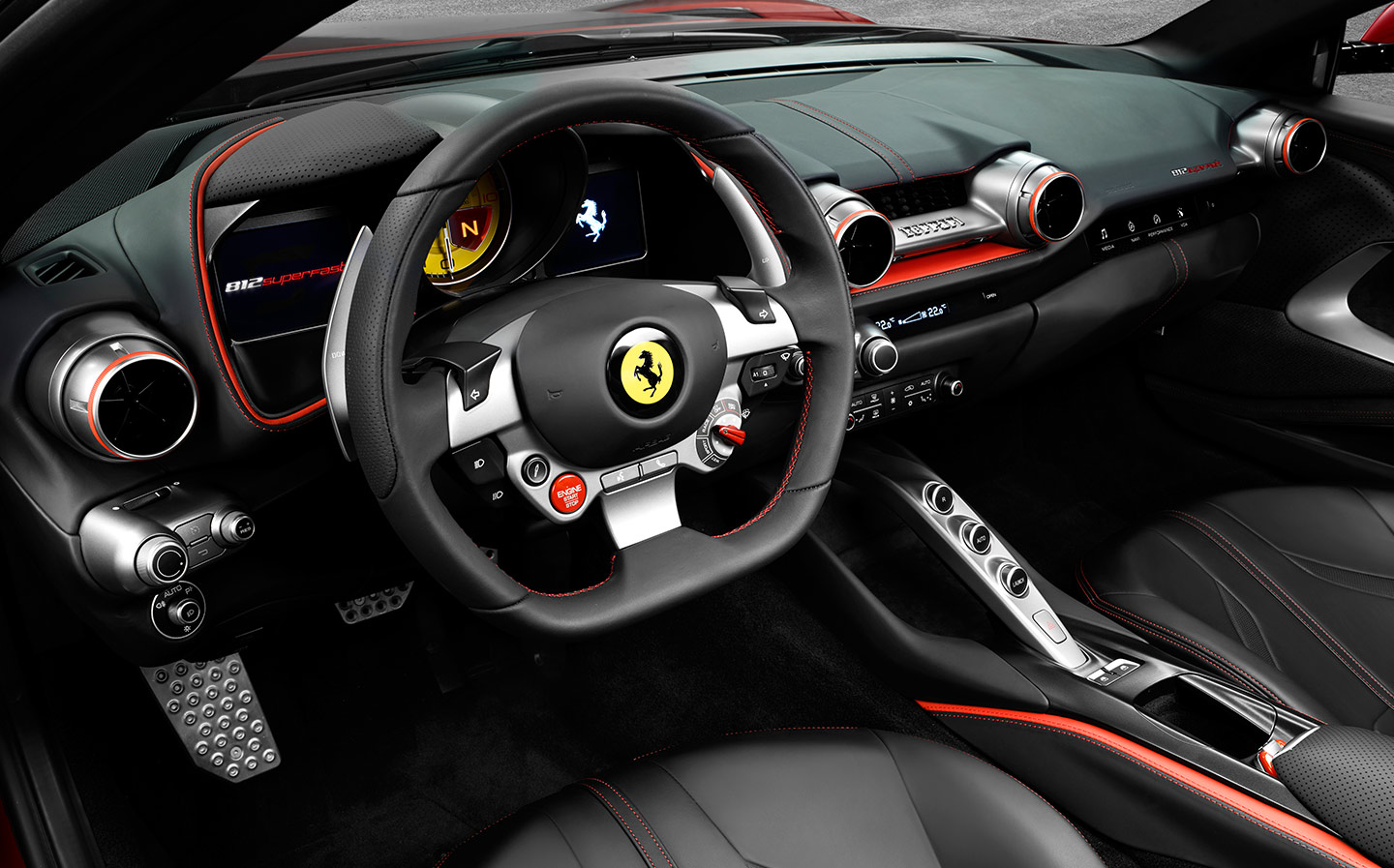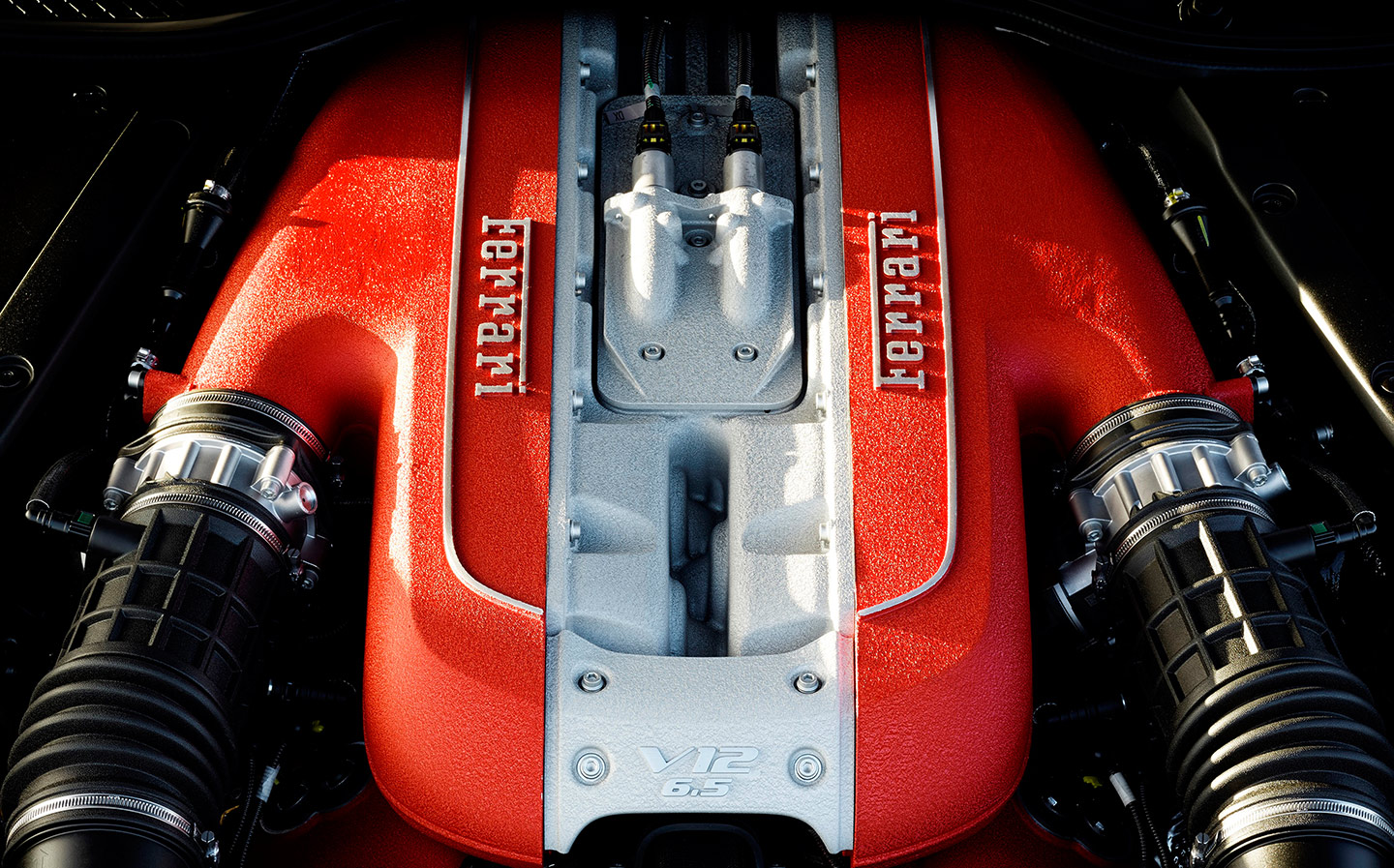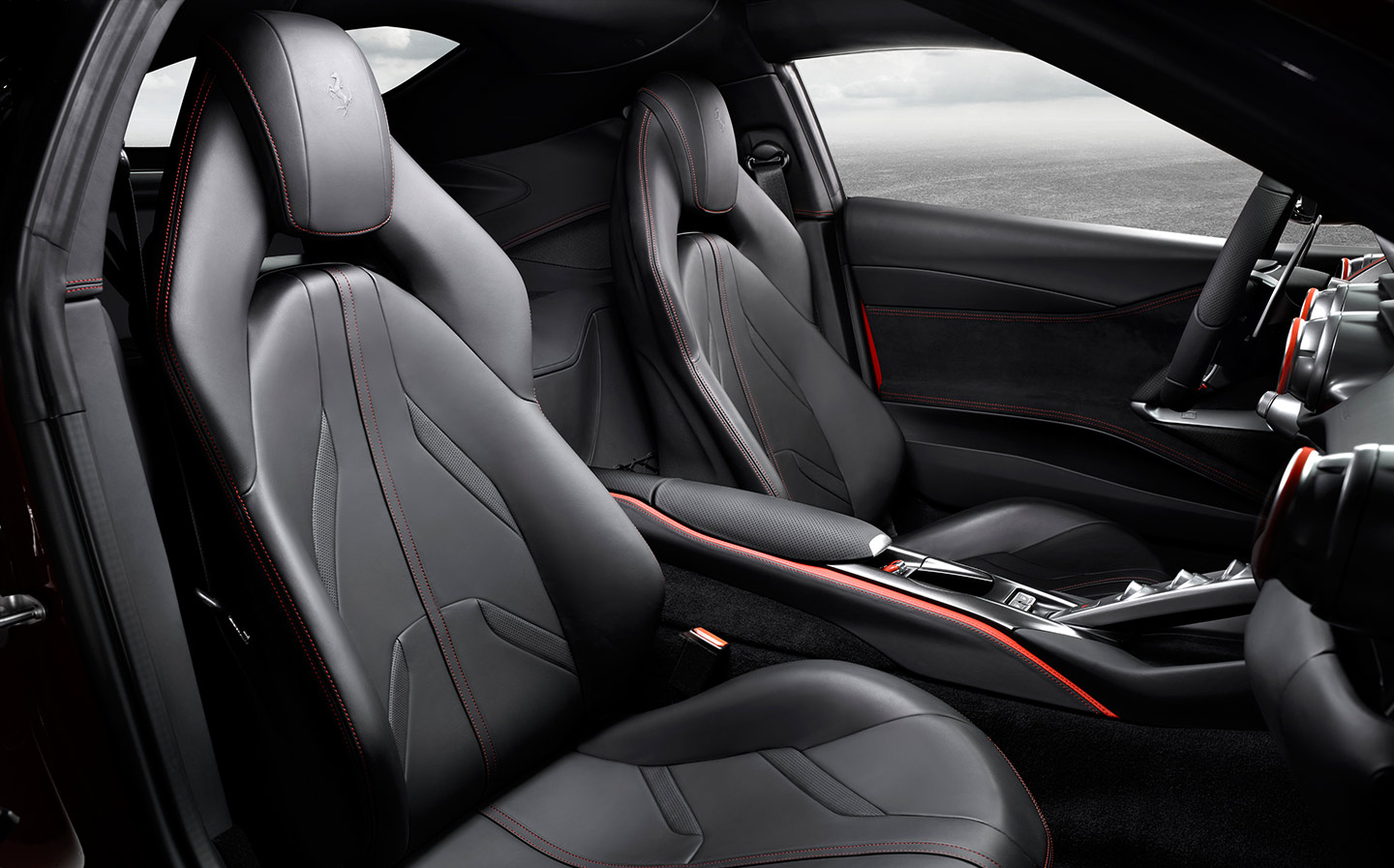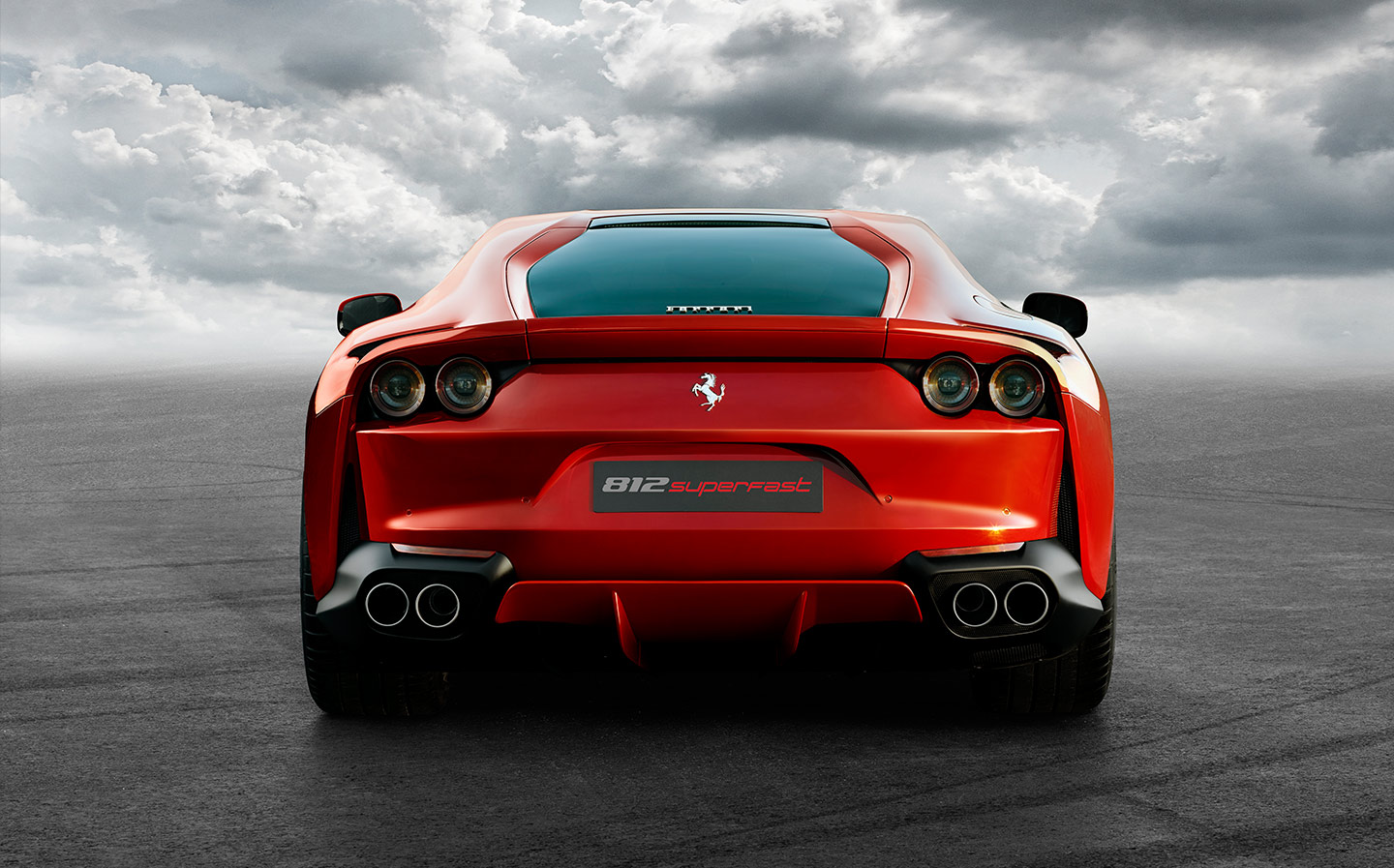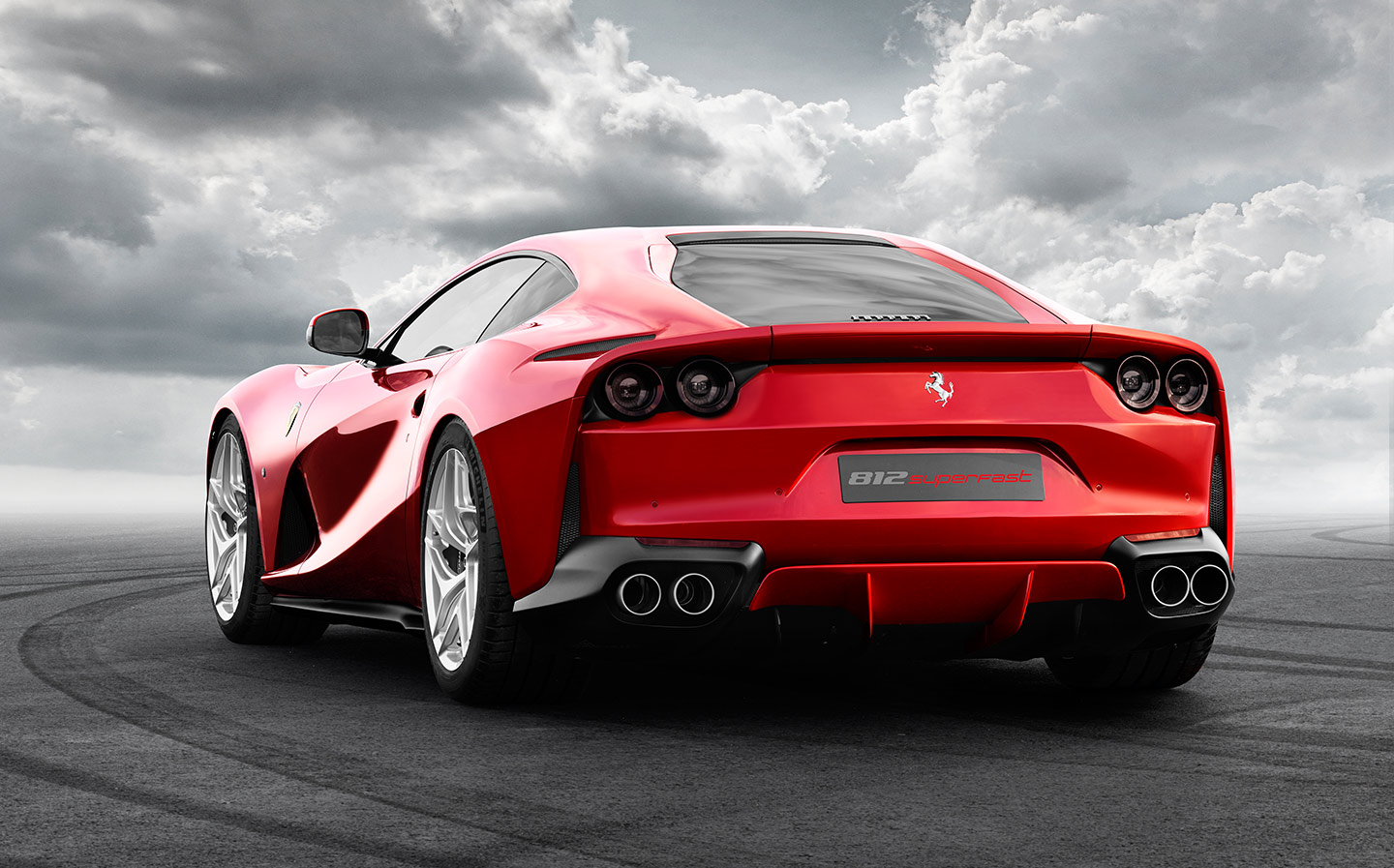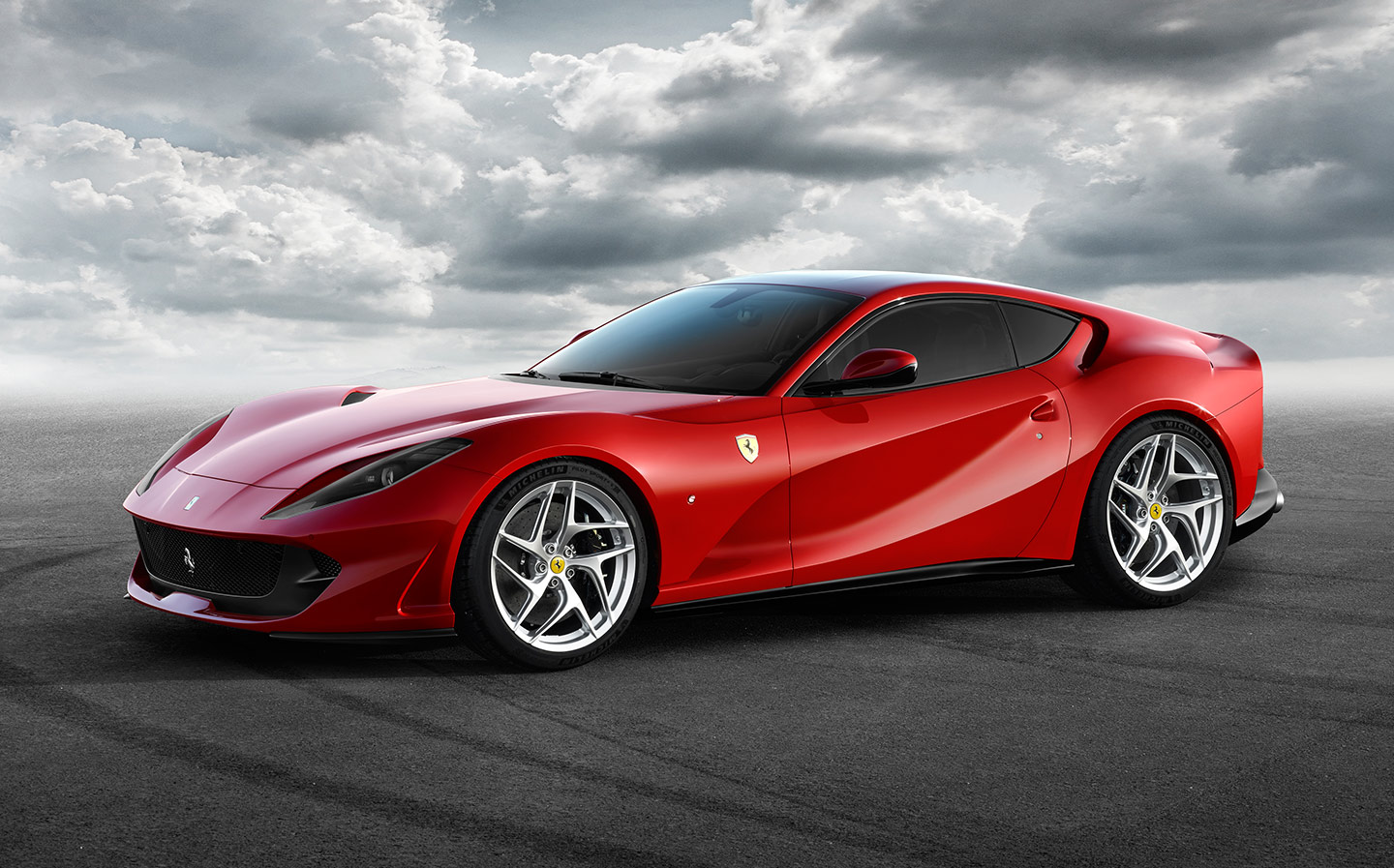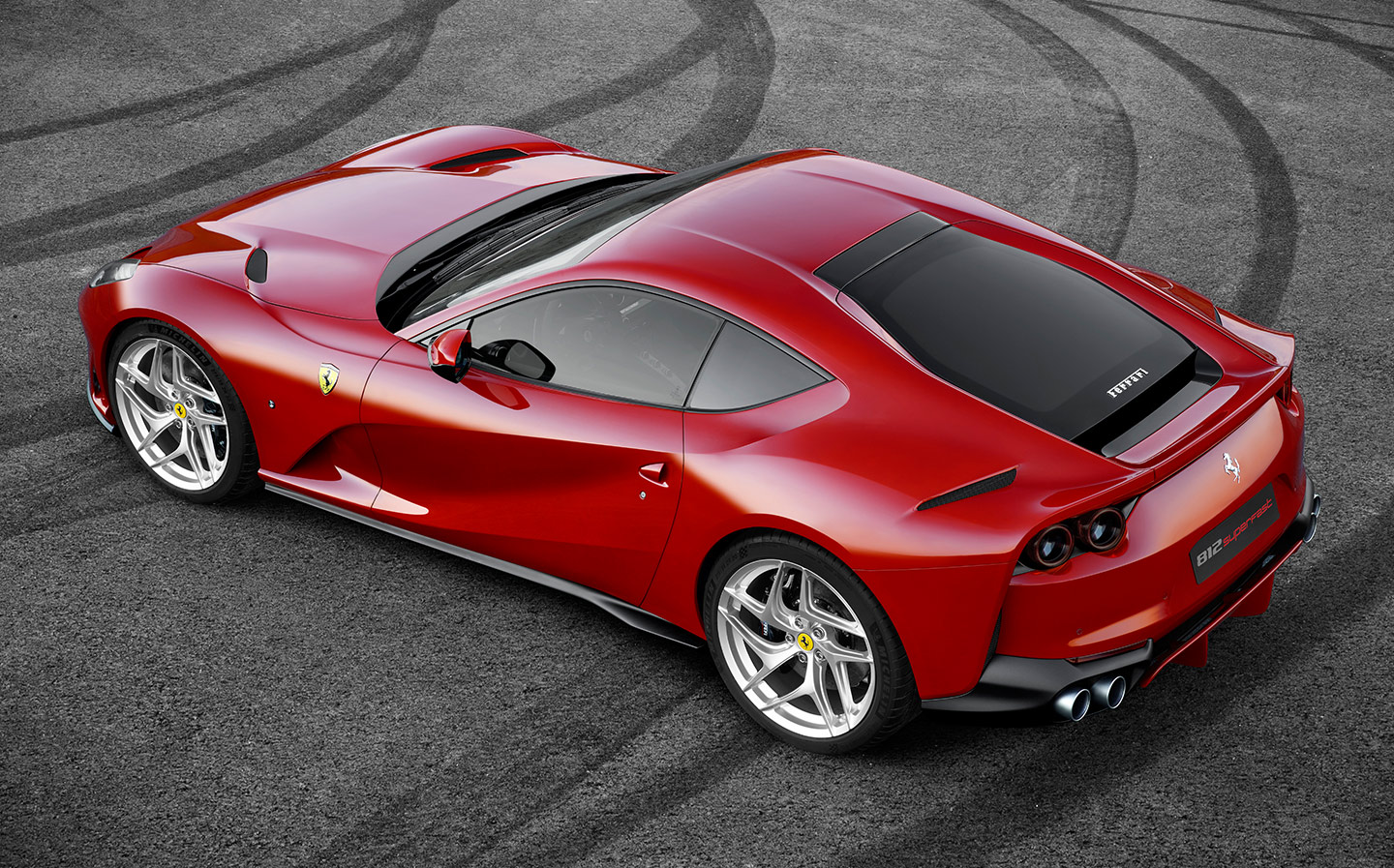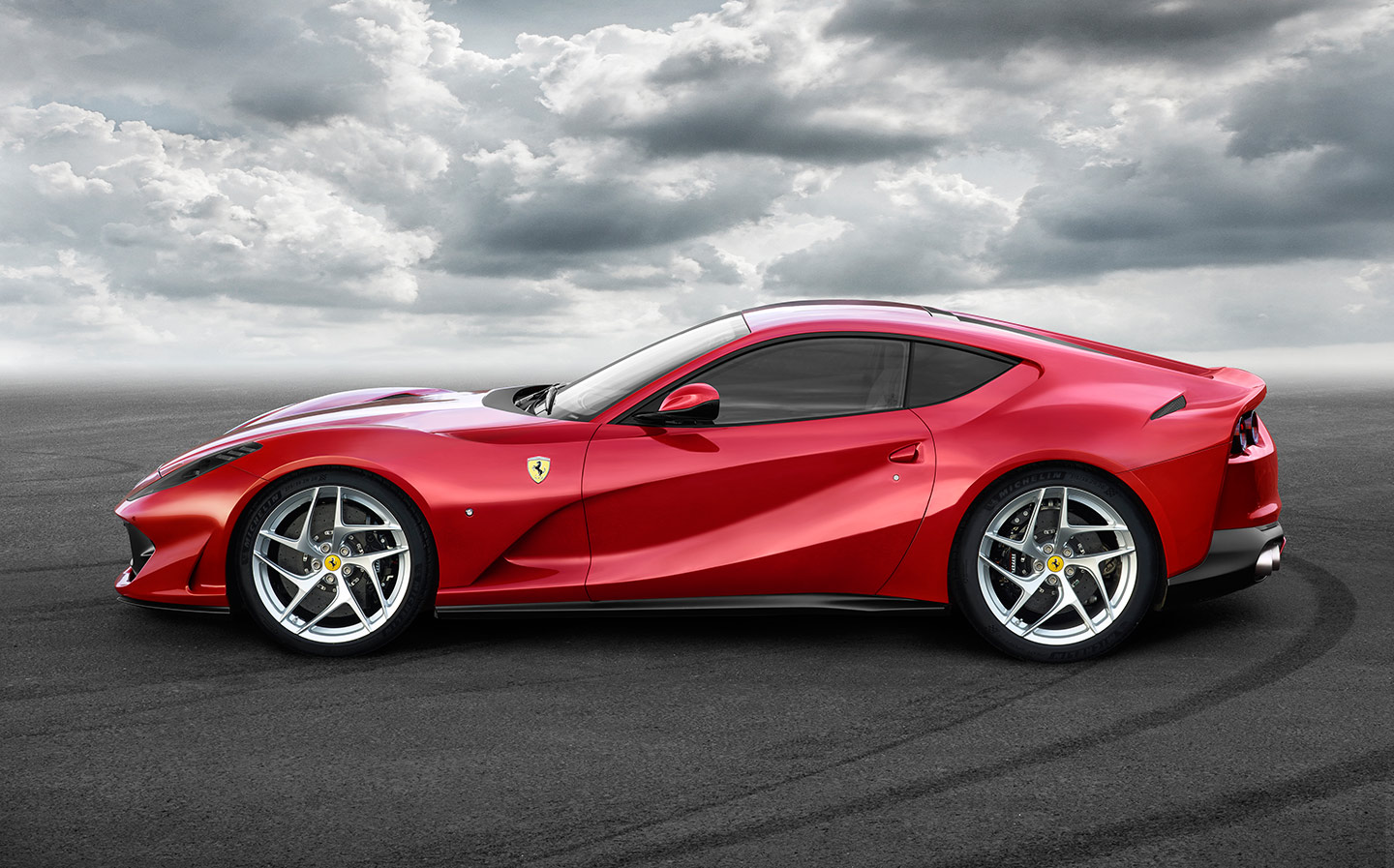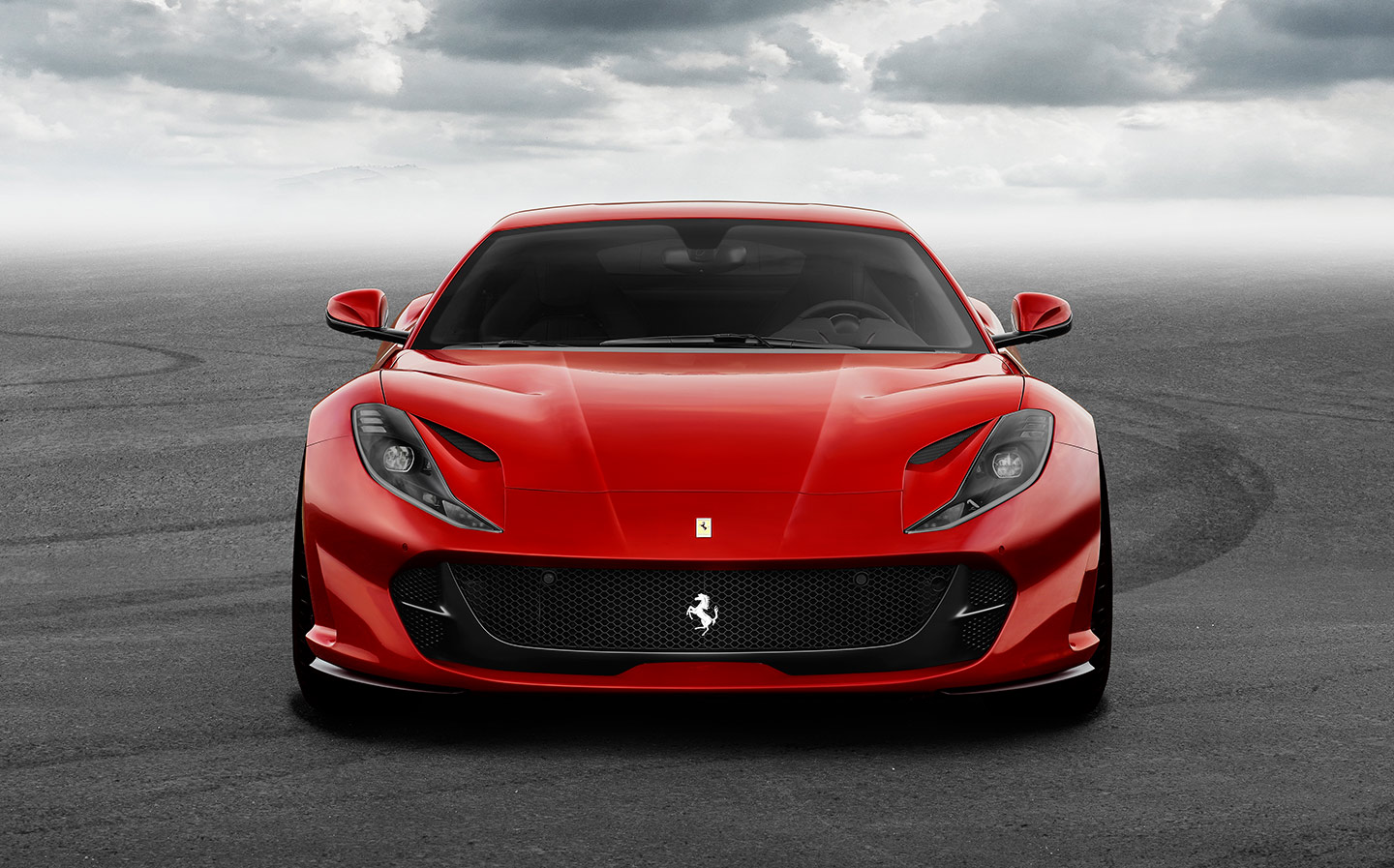Ferrari 812 Superfast review
No turbos, but a whoosh of F1 magic
TURN off the stability control. Pull a paddle to select first gear. Kick the throttle with as much force as you can muster. Grab the steering wheel as the Ferrari’s computer summons maximum revs. Feel the rear wheels start to spin. Glance in the rear-view mirror as tyre smoke fills the air. Then marvel at the madness of it all — a £253,000 Ferrari with a “hooligan” mode.
Fiorano, Ferrari’s private test track, is at the heart of its Maranello headquarters. It’s where Enzo Ferrari had a house, where Michael Schumacher did thousands of laps in a Formula One car and where the development driver Raffaele de Simone and his team honed the 812 Superfast. Today it’s our playground as the company throws open its gates for the car’s official launch.
Hooligan antics over, it’s time to get serious. Fiorano offers a challenging mix of corners and undulations designed to highlight a car’s bad behaviour as well as its good. It’s the sort of place you need if you’re to explore the dynamic repertoire of a V12 Ferrari with 789bhp, which is not far off what an F1 car produces.
Browse NEW or USED cars for sale
Ferrari reckons that raw performance is still the biggest draw for its customers. And while 0-62mph times remain a talking point (the 812 will reach 62mph from standstill in 2.9 seconds, for the record), in the rarefied world of the supercar it’s the 0‑124mph figure that is the biggest source of pride. The 812’s time is 7.9 seconds, which is more than six seconds faster than the 550 Maranello managed in the 1990s. For comparison, the 720S of the British upstart McLaren covers the same sprint in 7.8 seconds.
The 720S relies on a pair of turbos to help the 4-litre V8 develop its thrust, but the Ferrari has no such affectation. The 812’s V12 is a gargantuan 6.5 litres, up from the 6.3-litre unit in the F12berlinetta the car replaces.
It won’t win prizes for eco-friendliness, but if you can afford the juice, it’s a dose of old-school charm. Ferrari reckons the V12 has only a few years before it’s overtaken by the rush to hybridisation, so enjoy it now.
Nothing, but nothing, sounds like a Ferrari V12. This engine will rev to 8,900rpm with a cultured Italianate howl from the quartet of exhaust pipes. If anything, it sounds even better outside the car than in, which is as things should be: aficionados reckon a Ferrari should be enjoyed by everyone.
It’s old-school in other ways too. There’s no four-wheel drive, but thankfully there is no shortage of electronic aids. The 812 offers five driving modes, with varying degrees of support. For example, CT Off (that’s Italian for hooligan mode, or, strictly speaking, traction control off) is designed to let the car slip and slide, but not to the point where you lose control.
Numerous scoops and intakes are needed to cool the engine and keep the car on the deck at the 211mph top speed, but it still manages to look elegant
This is the sort of trick Ferrari learnt in F1, at least until such systems were banned in the interests of improving the show. Not even McLaren, the firm’s closest British equivalent, can boast the heritage and F1 chic of Ferrari. Buying an 812 won’t make you Sebastien Vettel, but it will make you feel part of a club. That’s always been crucial to the appeal of the Prancing Horse badge and helps classic Ferraris sell for millions at auction.
The technology found in today’s machines is a match for anything else on the road. For example, this is the first Ferrari with electrically assisted power steering. When Porsche introduced such a setup in the 911, the owners’ club went into meltdown. Ferrari admits it’s been sitting on the technology for years, until it could be certain it wouldn’t provoke the same reaction.
The new system has a couple of novel features, including a means of adding weight to the steering to let you know when the maximum level of grip is about to be exceeded. It’s even supposed to encourage you to countersteer if the rear end starts to slide.
I have to admit I found it hard to detect. Anyway, if you need the steering wheel to tell you that the car is about to swap ends, then you and your supercar are heading for a costly excursion.
Don’t imagine, though, that the 812 is difficult to drive. Even with all the systems switched off at Fiorano, it’s as benign as any 789bhp rear-wheel-drive car has any right to be. Its sheer speed demands respect, but you can feel what’s going on. Whereas the mid-engined McLaren demands to be driven with racing-car precision, the Ferrari is a bit of a hoot.
Feel the nose bite, give the throttle a prod and indulge in a power slide. It won’t do much for tyre life — I saw Ferrari changing the boots after half a day on the circuit — but it will make you smile. You get the impression that this was a car developed con amore.
The ride quality’s good, too, especially in the comically named Bumpy Road suspension setting, while in Sport the paddle-shift gearbox is unerringly smooth.
It’s in this duality of character that the Ferrari scores over its rivals. In a 720S or a Lamborghini Aventador you’re forever reminded you’re in a mid-engined supercar. In the Ferrari, should the mood take you, you can settle back and be propelled with serenity to the French Riviera. And you can even take some luggage. A decent boot is supplemented by a shelf behind the seats.
If you’re thinking, though, that it looks a bit familiar, that’s because it does. Ferrari has adopted the habit of producing an all-new model and then following up with a sort of halfway house after a few years. The 488 GTB is thus an updated 458 Italia, and the 812 is a revised F12berlinetta, with a bit of the F12tdf (Tour de France) special edition thrown in. Car makers have not always proved adept at taking scalpels to their beloveds, but Ferrari has developed a knack for making second-generation cars more beautiful than the first.
Numerous scoops and intakes are needed to cool the engine and keep the car on the deck at the 211mph top speed, but it still manages to look more elegant and considered than the F12berlinetta, especially if you avoid a lurid colour scheme.
Inside, it’s the usual Ferrari blend of posh leather, understated good taste and eccentric layout; even when you’re familiar with it, it’s still far too easy to indicate or turn on the windscreen wipers when you least expect it.
Browse NEW or USED cars for sale
As always with Ferrari, the cockpit can be enhanced by an options list that’s a work of art, and most customers will spend at least £50,000 on personalisation. Our favourite extra is a screen in front of the passenger that shows the selected gear, speed and revs. Like most Ferrari add-ons, it’s not cheap, but what’s an extra £3,360 when you’re spending £250,000?
Like so much of the 812, it is gloriously over the top. Viewed objectively, a Porsche 911 does almost everything the Ferrari does for a third the cost, but that’s never been the point of a V12 Ferrari. It’s an indulgence that will give you a permasmile, whether you deploy the hooligan mode or not. You’re not buying a car; you’re buying a piece of Italy’s cultural heritage and one that won’t be around for ever.
Tweet to @AlistairWeaver Follow @AlistairWeaver
Jeremy Clarkson is away
Write to us at driving@sunday-times.co.uk, or Driving, The Sunday Times, 1 London Bridge Street, London SE1 9GF


